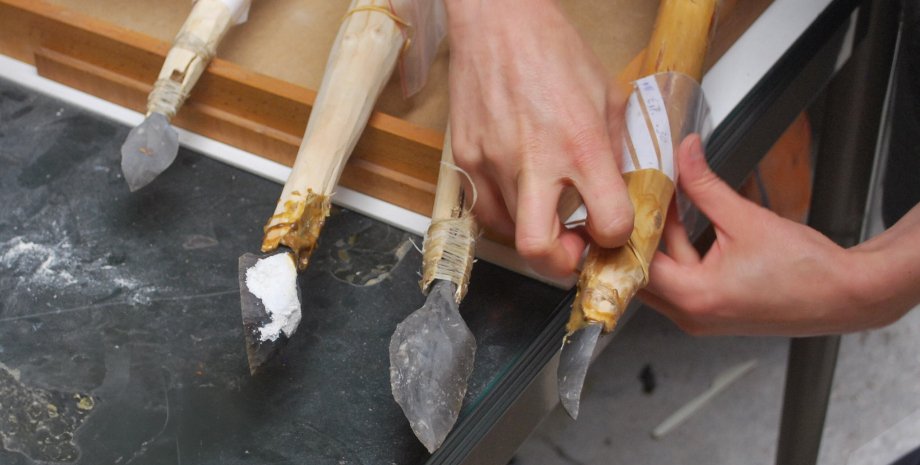
 By Victor Duda
By Victor Duda
This discovery was the result of a recent study conducted at Traceolab, a research center of Ledza University, writes Phys. org. In focus, technology appeared its Telegram channel. Subscribe not to miss the latest and most intrusive news from the world of science! The study studied the material found on the archaeological area of the Mezier Canal, which sheds new light on the use of spears.
This find is especially interesting because it pushes the timing of the use of hunting technique 10,000 years ago, which makes it much earlier than scientists considered it originally. So, what is the listle? It is a tool that was used to run long darts similar to arrows, but much larger, at considerable distances. In fact, these lists could throw darts up to 80 meters. Such development of long -range hunting weapons had a deep impact on human evolution.
He changed the way of hunting our ancestors, influenced their methods of hunting, diet and even social organization. The age of this long -range weapon has long been the subject of discussions among scientists. This is due to the fact that it was initially made of organic materials that are poorly stored over time, so it is difficult to find in archaeological excavations.
Instead, archaeologists find the stone edges that used on this weapon, but it was not easy to link them with a particular species. Recent statements about early use of spears and bows in Europe and Africa have mostly relied on the size of the shells to associate them with these weapons systems. However, this approach has its disadvantages because the size of arrowheads, darts and spears can be significantly different. Traceolab researchers have applied an innovative approach.
They combined ballistic analysis and destruction mechanics to understand the traces left on the flint edges found on the spot. To do this, they conducted a large -scale experiment, which was shot by copies of paleolithic shells of various weapons, including spears, bows and spears. Having carefully studied the damage on these stone edges, scientists were able to understand how each weapon influenced the destruction of the edge in the event of a target.
Each weapon left clear traces on the stone edges, which allowed archaeologists to compare these traces with archaeological findings. In a sense, it is similar to the identification of weapons in the footsteps that leaves the barrel in the ball - a practice known from forensic. The coincidence between the experimental samples of the spear metal metal metal samples from the Mezier channel confirmed that the hunters in this place really used this weapon.
This discovery opens up new opportunities for archaeologists to apply this method in other monuments to better understand the age and use of ancient long -range weapons. Finally, the study revealed an important aspect of history. The use of spears metalworkers 31,000 years ago is significantly ahead of previous estimates, changing our understanding of human technological innovations. This is a reminder of how our ancestors developed brilliant tools that had a deep impact on their lifestyle.
The study not only gives valuable information about the past, but also encourages further study of the world of ancient weapons, which will undoubtedly reveal even more incredible secrets about our history. Earlier, focus wrote about a rare instrument of bronze age, which was discovered in northern Italy. He is over 3,000 years old. We also talked about the intact Etruscan tomb, which archaeologists have opened.










All rights reserved IN-Ukraine.info - 2022